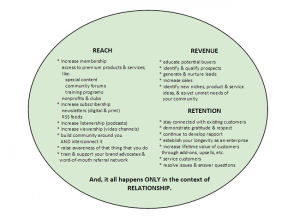
What role does fear play in conflict, and how can we overcome it to address a disagreement? I talked about this with Christina Eanes for the Quit Bleeping Around podcast.
Keep Things in Proportion
Conflict doesn’t have to be dangerous. After all, we sometimes even disagree with ourselves: “One part of me wants to do A, but another part of me wants to do B.” Internal conflict can be stressful, but it doesn’t usually trigger the level of agitation, anxiety, and fear that can come from thinking that somebody wants the opposite of what you want — or worse yet, is out to get you. Different people want different things, and that’s a normal part of the human condition. You don’t need to feel afraid just because you want to go see a comedy and your buddy prefers a drama.
Expose Your Fear
A more activist way to turn down the dial on your fear is to figure out what you’re actually afraid of — and then lean into it. I interview a lot of employees in different organizations. More often than you’d expect, they express fears of “getting in trouble” if they disagree with their bosses or even their colleagues. But the likelihood of their being fired or disciplined for having a different point of view is actually very small, so this generalized, existential fear isn’t really accurate.
Get Curious
What are you actually afraid of? Is it that someone is unhappy or angry with you, or that they will be? Why not verify your concern instead of worrying about it? It’s not the most comfortable thing to do, but with practice, it gets easier. You can say, “Oh, you seem angry, Timothy. Have I said something that angered you?” When you do that, most people will say, “Oh no, no, no. I’m just concerned about X.” The very fact that you were willing to ask reminds them that you’re probably not the problem, even if you’re the closest person at hand to react to.
Once you’ve managed your fear, you’ll still have to deal with whatever the content of the conflict is. If you can get curious and learn more explicitly what the participants’ concerns are, what they care about, and what their fears are before you put your armor on, you can often work things out before it feels like you’re in a fight.
Give Yourself Time
But while you’re figuring out the conflict’s content, it helps to hold yourself in check, whether you’re feeling fearful, angry, or anything else. When the other participants see that you are calm, measured, and trying to understand, they’ll be much more likely to level with you. And then you can say, “Oh, that’s so interesting. I hadn’t understood the way you’re feeling about it.” Or, “I didn’t realize that those were your concerns. Let me think a little bit about how I can best respond to that.”
You don’t even have to answer right away. You can actually pause and think, “What should I do now? What’s the best course of action?” It’s the same as when somebody asks you a question and you actually don’t know the answer; you’re better off saying, “Let me research that, and I’ll come back to you with a solid answer.” You rarely need to respond in the moment unless an individual is actually behaving badly by denigrating others or proceeding in an unethical way. In that case, you may have to act immediately — to stand up and call on them to stop that behavior and work collaboratively instead.
Find Common Ground
It’s okay not to agree. You may have valid and legitimate reasons not to see eye to eye about what other participants want to do. Maybe it’s one of those archetypical sales-vs.-operations-type conflicts in which performance goals and compensation structures are set up at cross purposes. Nonetheless, it’s helpful to step back from the specific issue and instead look for the values and overarching sense of purpose that you have in common, such as delivering the best product or being number one in customer service. This way, you can look for a mutual solution by finding as much common ground as possible rather than treating each other like enemies.
It’s Not Always Easy, But There’s (Almost) Always a Solution
Even when you apply some of these techniques, it may be very hard at first to feel like you’ve handled a conflict successfully. It takes practice, and it doesn’t usually feel like “winning.” But there’s always something you can do, even if it’s just saying, “Let me get more information and then we’ll discuss it again,” or finding an exit line so you can leave the discussion for a few minutes and think better about how to approach the situation. If you can manage your fear, get curious about what’s going on with the other parties, and look for common ground, you can almost always improve a conflict situation.
Business & Finance Articles on Business 2 Community
(49)








